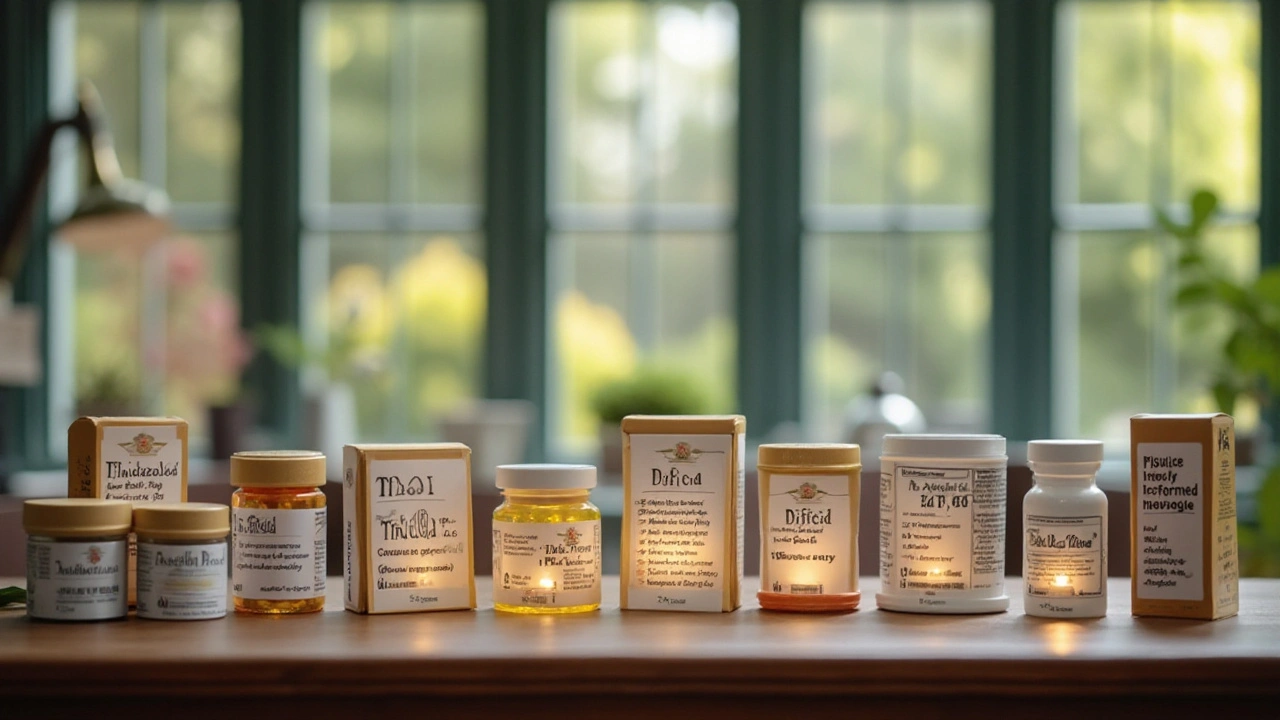Flagyl alternatives: real options for different infections
If Flagyl (metronidazole) isn’t working for you, or you can’t take it, there are several solid alternatives depending on the infection. Below I break down common substitutes, when they’re used, and simple safety tips so you can talk to your clinician with confidence.
Which alternative fits your infection?
Not every drug swaps in for Flagyl the same way. Match the medicine to the bug and the site of infection:
- For trichomoniasis: Tinidazole or secnidazole are the main go-tos. They often work when single-dose metronidazole fails. Clinicians commonly use tinidazole (single high dose or a short multi-day course) after testing and counseling about alcohol use.
- For bacterial vaginosis (BV): Oral or vaginal clindamycin, or secnidazole, are effective alternatives. Topical clindamycin cream or ovules can reduce systemic side effects and are useful if oral nitroimidazoles are unsuitable.
- For giardiasis and some intestinal parasites: Tinidazole and nitazoxanide are alternatives that can be easier to tolerate for some people.
- For anaerobic infections and intra-abdominal infections: Clindamycin or certain beta-lactam/beta-lactamase inhibitor combos (like amoxicillin‑clavulanate) are used instead of metronidazole in many settings. For serious C. difficile infections, metronidazole is no longer the first choice — oral vancomycin or fidaxomicin are preferred.
Safety, interactions, and practical steps
Quick safety notes that matter:
- Alcohol: Avoid alcohol while on nitroimidazoles (metronidazole, tinidazole, secnidazole). Drinking can cause nausea, flushing, and rapid heartbeat.
- Pregnancy: Some alternatives (tinidazole, secnidazole) are not recommended in pregnancy. Tell your provider if you’re pregnant or breastfeeding before changing meds.
- Allergies and gut side effects: If you’ve had GI upset or rashes on one drug, your clinician can suggest a different class (for example, clindamycin instead of a nitroimidazole).
- Resistance and testing: If symptoms persist after treatment, get retested. Persistent infections sometimes need a different drug or longer therapy rather than repeating the same course.
Practical steps to take now: get a clear diagnosis (lab test when possible), list your allergies/meds, ask about pregnancy or alcohol restrictions, and discuss local (topical) versus oral therapy. If you have severe symptoms — high fever, severe abdominal pain, heavy vaginal bleeding, or signs of systemic infection — seek care urgently.
Want help preparing for a clinic visit? Bring a short list: current meds, allergies, prior antibiotic reactions, and how long symptoms have lasted. That makes it easier for your clinician to pick the safest, most effective Flagyl alternative for you.

- 15 Comments
Exploring the top alternatives to Flagyl in 2024, this article delves into different antibiotics that can be used for treating various bacterial and parasitic infections. Each alternative is discussed, highlighting its uses, pros, and cons, making it easier for patients and healthcare providers to make informed decisions. From Tinidazole to Dificid, learn about the pros and cons of these medications. This guide will help you understand the options available when Flagyl is not a viable choice.
